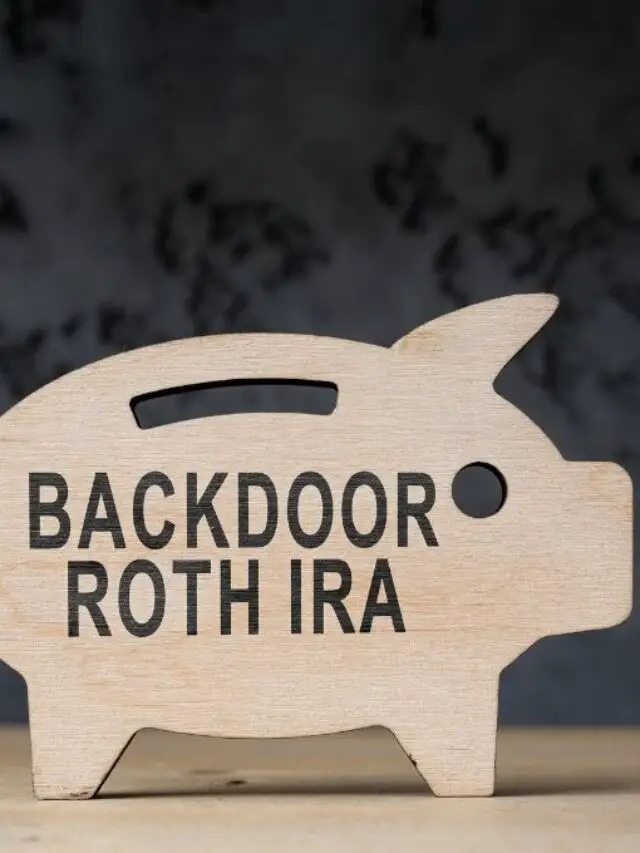Do you find yourself ensnared in a labyrinth of home improvement loan options? You’re not alone. Many tread this convoluted path, wrestling with questions about which loan suits their specific situation best. This article serves as your beacon, guiding you through the fog of home improvement loans.
Table of Contents
✍ Key Takeaways
- Types of Loans: Diverse types, each with its array of pros and cons, await you.
- Flexibility vs. Stability: HELOC offers flexibility, but a home equity loan provides a fixed rate. Understand your needs to make an informed choice.
- Government Assistance: Often overlooked, this could be a boon for eligible applicants.
- Costs: Be cautious of hidden fees, fluctuating interest rates, and other costs that come with some loans.
- Peer-to-Peer Lending: An emerging method, this one deserves your scrutiny.
What Is a Home Improvement Loan?
Ever puzzled over what exactly constitutes a home improvement loan? Allow us to unfurl the mystery. A home improvement loan can be described as a financial tool that allows homeowners to borrow money for home renovations. This category isn’t monolithic; rather, it consists of several loan types. Each type addresses unique needs, risks, and benefits. The right loan for you may not be right for someone else. The following sections delineate the various types you might consider, from traditional loans to less conventional means like grants and peer-to-peer lending.
Comparison of Loan Types
| Loan Type | Interest Rate | Term Length | Collateral Required |
| Personal Loan | High | Short | No |
| Cash-out Refinance | Moderate | Long | Yes |
| HELOC | Variable | Medium | Yes |
| Home Equity Loan | Low | Long | Yes |
Pro Tip:
Consult a financial advisor to help you select a loan type that aligns with your financial goals and risk tolerance.
Home Improvement Loan Options
1. Personal Loans: The Unsecured Marvel
If you’re hunting for a quick solution sans the need to leverage your house, a personal loan may beckon. This loan type often comes with higher interest rates because it doesn’t require collateral. Thus, if you default, your property remains safe.
Strategy for Applying
- Research various lenders
- Check your credit score; higher scores often fetch lower interest rates
- Gather your financial documents
- Apply and await approval, which usually happens swiftly
Interest Rates vs. Loan Amount for Personal Loans
| Loan Amount ($) | Average Interest Rate (%) |
| 5,000 | 10 |
| 10,000 | 9 |
| 20,000 | 8 |
Higher loan amounts often secure slightly better interest rates. Nonetheless, given their unsecured nature, these rates still lean toward the higher side.
Read this excellent article on CreditKarma.com for a guide to Personal Loans for Home Improvement.
2. Cash-out Refinance: A Twist in Mortgage Tales
Cash-out refinancing offers a unique avenue. You replace your existing mortgage with a larger one, then take the difference in cash. This method is generally favored by those with a substantial amount of equity in their homes.
Strategy for Applying
- Determine the amount needed for your home improvement
- Compare it with the equity you have in your home
- Approach your mortgage lender and discuss terms
- Go through the underwriting process
Cash-out Amount vs. Home Equity
| Home Equity ($) | Max Cash-out Amount ($) |
| 50,000 | 40,000 |
| 100,000 | 80,000 |
| 200,000 | 160,000 |
The graph illustrates a general rule of thumb: You can usually cash out up to 80% of your home’s equity. Be cautious, though. By doing so, you’re altering the terms of your original mortgage, which could carry its own set of complexities.
Pro Tip:
Carefully evaluate your ability to meet the new mortgage terms before opting for cash-out refinancing, as defaulting could put your home at risk.
3. Home Equity Line of Credit: The Flex-Master
Home Equity Lines of Credit, colloquially known as HELOCs, offer a revolving line of credit against your home’s equity. Consider this the credit card of home loans, albeit one with potentially far-reaching ramifications for your property if mismanaged.
Strategy for Applying
- Evaluate the equity in your dwelling
- Research HELOC providers
- Submit an application, which generally requires a property appraisal
- If approved, draw funds as needed up to the credit limit
Monthly Payments for HELOC
| Credit Limit ($) | Monthly Payment ($) |
| 10,000 | 200 |
| 50,000 | 1,000 |
| 100,000 | 2,000 |
Be advised: The variable interest rate could mean fluctuations in your monthly payments. Your monthly payment could skyrocket if interest rates rise.
4. Home Equity Loans: The Quiet Titan
Sometimes dubbed a “second mortgage,” a home equity loan provides a lump sum, using your home as collateral. Unlike a HELOC, this loan type carries a fixed interest rate, offering predictability.
Strategy for Applying
- Assess the equity available in your home
- Look for lenders offering favorable interest rates
- Gather needed documents: proof of income, home appraisal, etc.
- Submit your application and await the lender’s decision
Comparison of Monthly Payments between HELOC and Home Equity Loans
| Loan Type | Monthly Payment ($) |
| HELOC | Variable |
| Home Equity | Fixed |
Fixed monthly payments offer a level of certainty that HELOCs seldom can. This stability could mean a world of difference in long-term financial planning.
Pro Tip:
If your home improvement project requires a large, upfront investment, a home equity loan could provide the needed stability.
5. Credit Cards: Speed Meets Gamble
For smaller projects, a credit card might be all you need. Quick and straightforward, this method can also accrue reward points. But beware: The high-interest rates can be crushing if you’re unable to pay off the balance quickly.
Strategy for Applying
- Choose a credit card with a high limit and low-interest rate
- Use the card for purchases related to home improvement
- Pay off the balance as quickly as possible to avoid hefty interest
Interest Over Time for Credit Card Balances
| Months | Accrued Interest ($) |
| 1 | 50 |
| 6 | 300 |
| 12 | 600 |
It’s evident: The longer you take to pay off the balance, the more you’ll pay in interest. Those rewards points might not look so attractive when you factor in these costs.
6. Government Assistance: The Benevolent Alternative
Programs at both federal and state levels can help you finance home improvements. These options are particularly useful if you meet specific criteria, such as low income or veteran status.
Strategy for Applying
- Determine your eligibility
- Research government programs that align with your needs
- Fill out the requisite forms and provide any necessary documentation
- Await approval, which can often take longer than traditional loan methods
Percentage of Applicants Approved for Government Assistance
| Eligibility Criteria | Approval Rate (%) |
| Low Income | 70 |
| Veteran Status | 80 |
| Seniors | 60 |
Pro Tip: These programs can be highly specialized, so make sure to read all guidelines and requirements carefully.
7. Renovation Grants: The Untapped Bonanza
Few people consider grants when contemplating home improvement finance. Grants are essentially free money, provided you use them as stipulated. These can be a goldmine if you qualify.
Strategy for Applying
- Identify grants you might be eligible for
- Prepare a compelling application, often requiring detailed plans for your improvements
- Submit your application and wait, often longer than you would for a loan
Average Grant Amount by Category
| Grant Category | Average Grant Amount ($) |
| Energy Efficiency | 7,000 |
| Structural Repair | 10,000 |
| Historical Homes | 15,000 |
Conclusion
Conclusively, when considering the financing of any home improvement endeavor, you are presented with a veritable smorgasbord of options. Your optimal pathway will be a nuanced decision influenced by numerous variables, such as the enormity of your proposed project, your existing credit profile, and your general appetite for fiscal risk. Above all, never overlook the devilish details encapsulated in fine print.
Additional Resources
- Literature: Peruse “The Unabridged Encyclopedia of Home Improvement Financing” by Dr. Jane Whitman, PhD in Finance.
- Digital Destinations: Websites such as The Finance Guru and MasterLoan offer further elucidation.
- Computational Tools: Various online calculators are designed specifically to disentangle the complexity of home improvement loan variables.
Call to Action
Has the time arrived to metamorphose your dwelling into the sanctuary you’ve perpetually envisioned? Then let not the sands of time slip further. Conscientiously weigh your avenues, engage in scrupulous due diligence, and seek wisdom from accredited financial counselors to sculpt an astute resolution.
Frequently Asked Questions (FAQs)
- What arcane methodologies do financial institutions deploy to conjure the interest rates on home improvement loans?
The rate you’re offered isn’t pulled from thin air. In a finely calibrated process, lending entities synthesize multifarious parameters—your credit history, the loan quantum, its duration, and even prevailing economic oscillations—to stipulate your rate. - Is amalgamating a home improvement loan with my existing mortgage within the realm of possibilities?
Indeed, you might find yourself navigating this path. A mortgage refinance can englobe the sum needed for home improvements. Keep a weather eye out for new appraisal requirements and an uptick in closing costs. - Do I have to pledge my assets as collateral to materialize this loan?
Pledging assets isn’t universally obligatory. Unsecured loans sidestep this requirement, albeit often tethered to loftier interest rates when contrasted with their secured counterparts. - Fixed-rate versus variable-rate home improvement loans: What differentiates these two species?
Fixed-rate loans are stoic creatures, immune to market fluctuations, safeguarding you from sudden spikes in monthly payments. Variable rates, conversely, dance to the market’s ever-changing rhythm, making your financial commitment a tad unpredictable. - May I channel these funds toward erecting an entirely new structure on my property?
Often, yes. However, specific lender guidelines may either bless or veto such ambitions, so comb through the minutiae of your loan agreement. - The draw period of a Home Equity Line of Credit: What arcane mechanics govern it?
During this enigmatic phase, you’re empowered to siphon funds up to your credit ceiling. Your only fiduciary obligation at this juncture is often toward the accruing interest. - Is my income, however grandiose or modest, a restricting parameter in this loan-securing endeavor?
Conventional wisdom would dismiss the notion of an income ceiling, although your earnings will inevitably shape both the loan magnitude and interest temperament. - What about bureaucratic red tape, such as construction permits?
That’s on you, not the lender. Local ordinances usually mandate such documentation, and you’d do well to steer clear of the repercussions of bureaucratic ire—think fines or, heaven forbid, deconstruction orders. - Could one possibly avail oneself of a loan product with a green thumb?
A resounding yes! Some forward-thinking lenders specialize in loans catering to eco-conscious endeavors, sometimes incentivizing borrowers with more favorable terms. - Is deploying multiple financial artillery for one project a viable strategy?
While not outside the realm of feasibility, juggling multiple loans amplifies the intricacy of your financial ballet. Each lender’s caveats, coupled with the need to synchronize multiple repayment schedules, could stretch your fiscal acumen.
Prashant Chauhan
Author @ Finance RuffleMeet Prashant Pratap Chauhan, the savvy founder behind Finance Ruffle, a hub for sharp financial insights and expert analysis in the realm of finance blogging.



